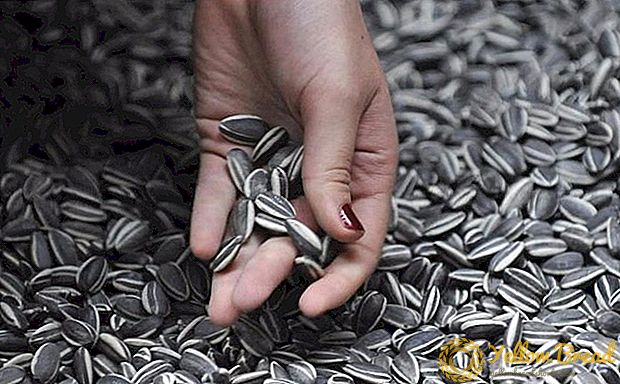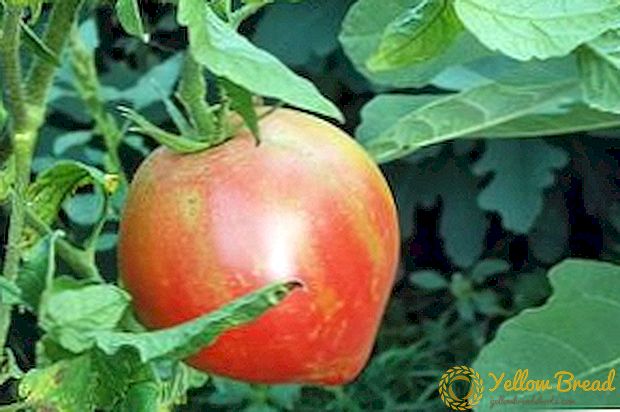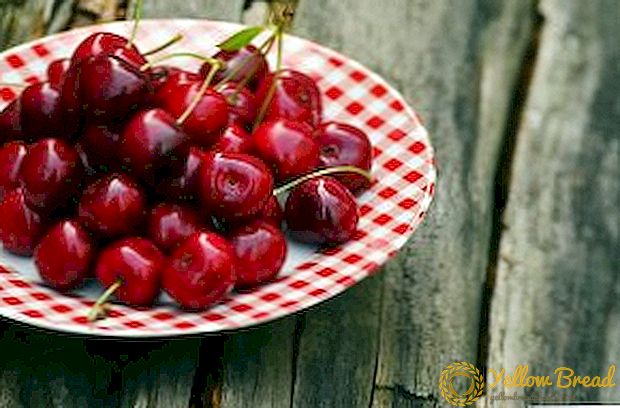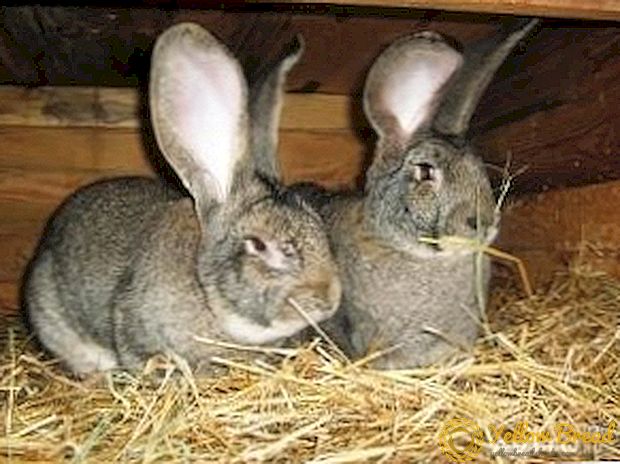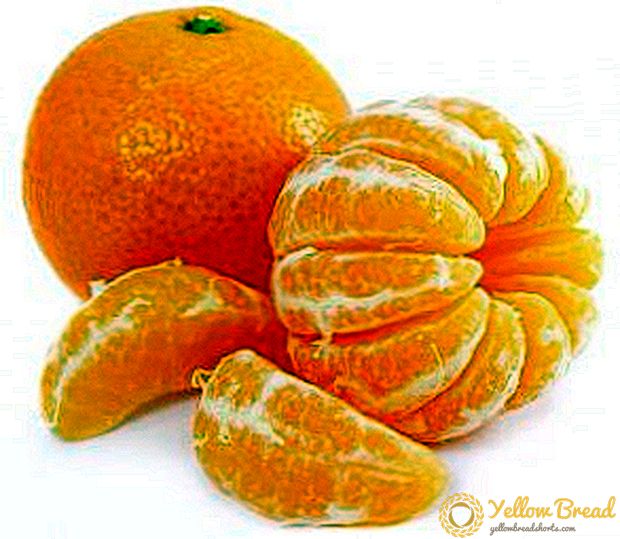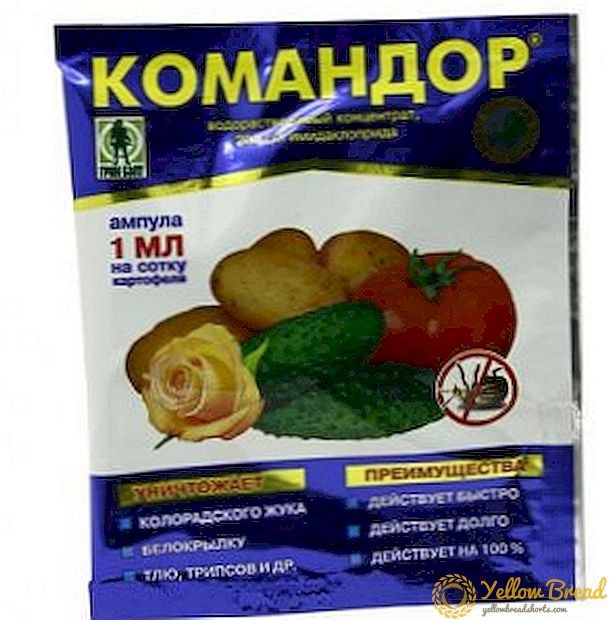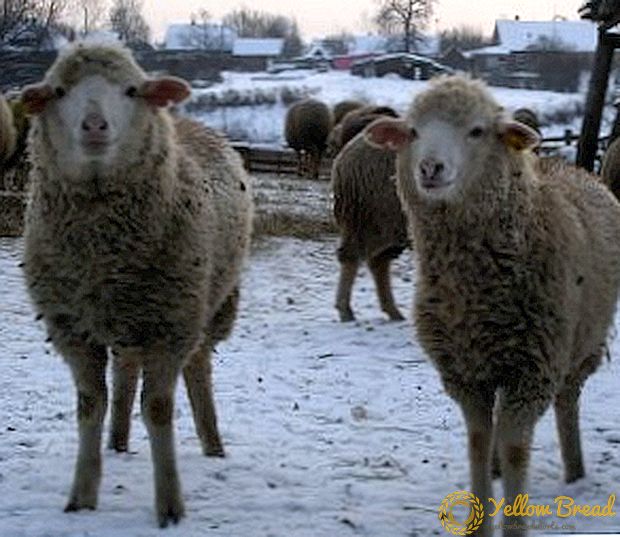 Merino sheep - These are fine-fleeced sheep. Usually they are bred for soft, light, warm wool that does not fall down. Although there are meat varieties. Let's understand the features of their content, care and reproduction.
Merino sheep - These are fine-fleeced sheep. Usually they are bred for soft, light, warm wool that does not fall down. Although there are meat varieties. Let's understand the features of their content, care and reproduction.
- Features breed merino
- Koshara for sheep
- Merino sheep grazing
- The diet of sheep breeds merino
- Caring for merino sheep breed
- Shearing
- Bathing sheep
- Hoof care
- Peculiarities of keeping sheep in winter
- Reproduction of merino
- Naturally
- Artificial insemination of sheep
Features breed merino
These sheep are not too whimsical in care and nutrition, they adapt well to any climate, are fertile, and the thick, uniform white merino wool consists of the same extremely thin (15-25 microns) fibers. Its length is 8.5–9 cm for a ram and 7.5–8.5 cm for a sheep. It covers the entire body of the sheep, leaving only the hooves, nose and horns open, contains grease, which gives it a yellowish tint.
 During the year, one ram gives 11–12 kg of rune (the maximum recorded is 28.5 kg), and a sheep 5.5–7 kg (maximum 9.5 kg). A distinctive feature of this wool is that it does not absorb the smell of sweat. Merino has a strong backbone, proportional physique and regular limbs. Rams have spiral horns. As for the weight of the merino, it is medium or large animals. The male can grow up to 100-125 kg, the record case is recorded - 148 kg. Ewe weighs 45-55 kg, maximum - 98 kg.
During the year, one ram gives 11–12 kg of rune (the maximum recorded is 28.5 kg), and a sheep 5.5–7 kg (maximum 9.5 kg). A distinctive feature of this wool is that it does not absorb the smell of sweat. Merino has a strong backbone, proportional physique and regular limbs. Rams have spiral horns. As for the weight of the merino, it is medium or large animals. The male can grow up to 100-125 kg, the record case is recorded - 148 kg. Ewe weighs 45-55 kg, maximum - 98 kg.
Koshara for sheep
For a kosara (a sheep house, or simply a sheep shed), a dry, warm enough in the winter and cool in the summer, well-ventilated (but without drafts) room is used. Floors can be unpaved, adobe, plank (in areas with a cold winter period). As a rule, to preserve the heat, the kosara is built on piles and has the shape of the letter “P” or “G”. And its height does not exceed 2 m. The entrance must be located on the sunny side, have a vestibule. With a side leeward of the prevailing winds close to the building, equip a paddock (at least twice the size of the sheepfold) with a waterer and a feeding trough and enclose it with a dense fence.
Usually, an elongated trough or wooden chute is used as a trough, and the trough has a rectangular or pentagonal shape.Each drinking bowl should be at least 90 liters in volume, because each animal drinks 6-10 liters of water per day. The content of the merino suggests the location of the sheep and bright separately. The room is divided using portable shields and feeders, because the rearrangement of the flocks will occur often, and it is inappropriate to use permanent partitions.
 In climatic zones with cold winters, care should be taken to construct warmed fences with a ceiling in the middle part - heatworms. The optimum temperature is 4–6 ° C, and for teplyak - 12 ° C.
In climatic zones with cold winters, care should be taken to construct warmed fences with a ceiling in the middle part - heatworms. The optimum temperature is 4–6 ° C, and for teplyak - 12 ° C.
Merino sheep grazing
Grazing should begin in spring, at the end of April - May, when the sun is already bright enough to quickly drain the dew, and the grass has grown to 8-10 cm. After all, if the merino wool gets wet from the grass at insufficiently high temperatures, this can lead to a cold.
In the summer, the dew is no longer terrible, and grazing begins early in the morning, from 11 to 17 o'clock the sheep are allowed to wait out the heat in the shade of the trees, under a canopy, or in a scarecrow. Then graze again, until 22 o'clock.
In the autumn period, grazing is reduced - from 11 am to 1 day, followed by a break, watering. Then you can graze until dusk.
The diet of sheep breeds merino
Feeding merino sheep is fairly simple, but includes a variety of feed, nutritional supplements and varies by season.
- In the spring it is fresh grass, food vitamin concentrate, hay (but not silo), salt and water.
- In summer, the diet remains the same, only the amount of grasses increases, and the concentrate decreases (from 650-350 g to 200 g).
- In the fall, grass residues, high quality hay, salt are consumed. (mineral), about a kilogram of potatoes, peas and water.
- In the winter (including march) go to feed: high-quality silage or hay, mixed fodder, up to 3 kg of vegetables (potatoes, peas, apples, carrots, beets), rock and mineral salt and water.
 The diet of lambs up to 3 months is mainly milk. The lamb, left without a mother, is fed with milk (it can be cow's) with the addition of food-grade vitamin concentrate using nipples. By the age of three months, the consumption of concentrate increases to half a kilogram per day.
The diet of lambs up to 3 months is mainly milk. The lamb, left without a mother, is fed with milk (it can be cow's) with the addition of food-grade vitamin concentrate using nipples. By the age of three months, the consumption of concentrate increases to half a kilogram per day.Caring for merino sheep breed
Caring for this breed includes cutting, bathing and taking care of the hoofs.
Shearing
Adult Merino haircut is done once a year - in the spring.Lambs born in spring are sheared next year, and those born in the middle - end of winter - in June - August (provided that the hair on the back, shoulder blades and sides grew to 3.5-4 cm).
Grooming has a positive effect on animal health. Unfinished sheep will not tolerate heat, lose weight. Choose a flat platform, place a wooden shield 1.5 x 1.5 m there and cover it with a tarpaulin.
 Inspect the sheep after shearing, lubricate the possible scratches with a disinfectant fluid and protect it from sunburn and colds for a week or two.
Inspect the sheep after shearing, lubricate the possible scratches with a disinfectant fluid and protect it from sunburn and colds for a week or two.Bathing sheep
Pay attention to bathing sheep. Two or three weeks after shearing in the spring, and also in the summer, after beating the lambs, in warm weather, drive the flock through a deep hole (the water should not be above the neck) filled with water and disinfectant added. The descent should be steep, and the exit, on the contrary, should be gentle.
Drive sheep to the split. After swimming 10 meters, the animal must come out of the water on the opposite side of the pit. You can apply and shower installation with a jet pressure of the solution to 2 atmospheres.Sheep are bathed in the event of a transition from one household to another.
Hoof care
When breeding merino sheep, it is worth knowing that their weak point is their hooves, and to take care of them properly, otherwise animals will start to limp and may develop hoof rot. In a month the hoof grows by 5 mm. Too regrown, it easily wraps itself under the skin, as it is very elastic, it gets dirt, manure, and inflammation begins. Hooves should be cleaned regularly and trimmed at least four times a year. Their inspection should be regular.
 If necessary, remove the dirt from the intergame crack and trim the horny part of the hoof. To do this, lay the sheep on the ground, fix it using a shears or a knife, give the horn a regular shape, but not exposing the soft part of the hoof. It is more convenient to do this after rain. The exception is the deep uterus (at 4-5 months of pregnancy), which is contraindicated for hoof trimming, as it can lead to miscarriage.
If necessary, remove the dirt from the intergame crack and trim the horny part of the hoof. To do this, lay the sheep on the ground, fix it using a shears or a knife, give the horn a regular shape, but not exposing the soft part of the hoof. It is more convenient to do this after rain. The exception is the deep uterus (at 4-5 months of pregnancy), which is contraindicated for hoof trimming, as it can lead to miscarriage.
The presence of hoofed ram sheep should be examined more often, because they are more susceptible to this disease. Its manifestation will be an unpleasant smell emanating from the hoof.Prevention will be served on a dry bedding, timely cleaning of the premises and weekly preventive baths with 15% saline solution or 5% solution of copper sulfate.
Peculiarities of keeping sheep in winter
One month prior to the beginning of the winter (stall) period, conduct preventive treatment of livestock (de-worming, diagnostic examinations, anti-catheter bathing). If it is not stuffy and there is no pipe, then it is worth replacing the glass with a warm cloth, warm the doors, caulk the gaps. The floor is covered with straw, which is filled daily.
 Manure should be cleaned in a timely manner. But if you keep the sheep in the sheepfold unnecessarily, it will lead to their excessive sensitivity to cold, drafts, dampness, will contribute to disease. Therefore, use every opportunity for winter grazing. As for the winter ration, the information is presented above.
Manure should be cleaned in a timely manner. But if you keep the sheep in the sheepfold unnecessarily, it will lead to their excessive sensitivity to cold, drafts, dampness, will contribute to disease. Therefore, use every opportunity for winter grazing. As for the winter ration, the information is presented above.
Reproduction of merino
Considering how long the merino pregnancy proceeds (20-22 weeks), the sheep breeder is counting on how long the lamb of the sheep will fall.It is better to choose the end of winter or the beginning of spring, so that newborn lambs do not succumb to extreme cold, and by the beginning of grazing, there is enough young growth. Pregnant ewes will require increased nutrition and show natural anxiety for these animals, especially before lambing. Fertility is 130-140%.
Naturally
The case of bright merino sheep with a ram is possible when it reaches one year old. The male covers the female for 1-2 days (including breaks for several hours). If the sheep did not pass the coating, then after a couple of weeks, the procedure is repeated.
Artificial insemination of sheep
 It is used, as a rule, for sheep breeding, in order to improve the breed, allows to reduce the number of sheep-producers. Sheep are brought into a special machine, and a whole / diluted sperm of a breeding male is injected into the vagina with a syringe by a vet / zoo technician.
It is used, as a rule, for sheep breeding, in order to improve the breed, allows to reduce the number of sheep-producers. Sheep are brought into a special machine, and a whole / diluted sperm of a breeding male is injected into the vagina with a syringe by a vet / zoo technician.
Keeping and caring for merino sheep brings some hassle, but it pays off after shearing. After all, their beautiful, soft, light, hygroscopic wool - one of the most expensive and sought after in the textile market.

